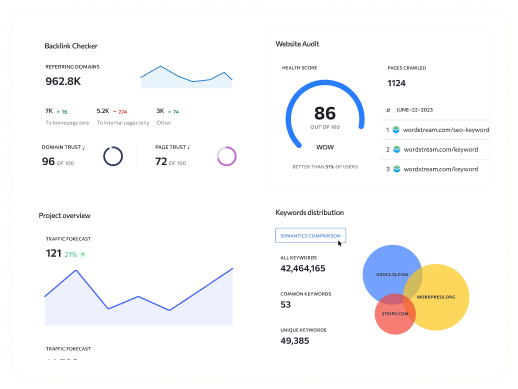Gross Merchandise Volume (GMV) is a key metric often used in the e-commerce industry to measure the total value of goods sold over a specific period of time, typically a month, quarter, or year. It represents the gross sales figure generated from selling products or services on an online marketplace, before deducting any costs such as shipping, returns, or discounts.
For example, if an e-commerce platform sells 1,000 items, each priced at $100, the GMV for that period would be $100,000. It is important to note that Gross Merchandise Volume (GMV) focuses only on the sales price of the goods sold, without considering operating expenses or the actual profit earned. This makes Gross Merchandise Volume (GMV) a valuable indicator of a company’s overall sales performance, rather than its profitability.
Why is Gross Merchandise Volume (GMV) Important?
- Sales Performance Indicator: Gross Merchandise Volume (GMV) offers a snapshot of how much merchandise is being sold on a platform, giving insight into its sales volume. It allows businesses and stakeholders to track growth, compare performance over different periods, and evaluate the platform’s overall market strength.
- Investor Insight: Investors often use Gross Merchandise Volume (GMV) to assess the scale of an online business. A higher Gross Merchandise Volume (GMV) suggests that the platform has a broad reach and is handling a large volume of transactions, which may be seen as a positive sign of potential business growth.
- Market Competitiveness: Companies also use Gross Merchandise Volume (GMV) to compare themselves with competitors. A higher Gross Merchandise Volume (GMV) indicates a larger share of the market, making the company more competitive within the e-commerce space.
- Influence on Strategic Decisions: Tracking Gross Merchandise Volume (GMV) helps businesses identify trends, customer preferences, and sales channels that are most profitable. This information can inform marketing strategies, product development, and expansion plans.
Limitations of Gross Merchandise Volume (GMV)
While Gross Merchandise Volume (GMV) provides useful information about sales volume, it has its limitations. It does not account for the costs involved in running an online platform, such as shipping fees, advertising, or payment processing. Additionally, Gross Merchandise Volume (GMV) doesn’t reflect the actual revenue or profit a company earns, which can sometimes be misleading if used alone.
Note: Read Our Latest Glossaries:
Year on year (YoY) | Google Plus (G+) | proof of concept | Gross Merchandise Volume (GMV) | rewrite my paragraph | portable network graphics | pay for performance | year to date meaning | Real-Time Bidding (RTB) | Budget, Authority, Need, Timing (BANT) | Bright Local (BL) | Return on Advertising Spend (ROAS) | Average Order Value (AOV) | share of voice | tf-idf | Outbound Link (OBL) | Calculate conversion cost | how to calculate beta | what is a gui | file transfer protocol | blackhatworld | cost per acquisition | engagement rate calculator | what is a coa | Customer Lifetime Value (CLTV) | Calculate YouTube Revenue | altavista search engine | sem copy optimisation | data management platform | Run of Site (ROS) | Search Engine Results Management (SERM) | Request for information (RFI) | Below the Fold (BTF) | star rating | sa360 | Application Program Interface (API) | what is an sop in business | Black Friday Cyber Monday (BFCM) | Google It Yourself (GIY) | Iterative Design Approach (IDA) | what is a bmp file | demand side platform | How to calculate average CPC | Trust Flow (TF) | Inverse Document Frequency (IDF) | Google Advertising Professional (GAP) | google trends search | google values | dynamic search ads | social bookmarking | how to calculate ctr | how to start a digital marketing company | Month on Month (MoM) | cost per impression | what counts as a view on youtube | what is ota
Frequently Asked Questions
Q1. What is Gross Merchandise Volume (GMV)?
A1: Gross Merchandise Volume (GMV) is the total sales value of merchandise sold through a marketplace or e-commerce platform during a specific period, excluding deductions like shipping or returns.
Q2. How is Gross Merchandise Volume (GMV) different from revenue?
A2: Gross Merchandise Volume (GMV) reflects the total value of goods sold, while revenue includes only the money a company actually earns after deducting fees, costs, and expenses.
Q3. Why do companies track Gross Merchandise Volume (GMV)?
A3: Gross Merchandise Volume (GMV) is a key performance indicator that shows how much merchandise is being sold, helping businesses assess growth, market share, and sales trends.
Q4. Is a high Gross Merchandise Volume (GMV) always a good thing?
A4: A high Gross Merchandise Volume (GMV) indicates strong sales but does not guarantee profitability. Companies with high GMV might still have high costs that reduce actual earnings.
Q5. Can Gross Merchandise Volume (GMV) be used to compare different companies?
A5: Yes, Gross Merchandise Volume (GMV) can be used to compare the sales volume of different companies, especially in the e-commerce sector, but it should be considered along with other financial metrics.





